|
Not long ago we received a letter from Ken Fletcher along with a scan of an old convention poster. Our passion is the preservation of first hand accounts of the early days of RPG with as little alteration as possible. Ken's reflections on the old days of SF fandom, as well as the initial stages of Role Playing games, are invaluable to all of us who are studying the Twin Cities gamers and related social groups. Ken's email to us about this artifact should be shared for other historians to copy and save along with the image. Ken has been very kind and given us permission to do so. The poster now resides in our archive and we have tagged it with our website. Feel free to use this image, or excerpts of it, yet, please respect our web tag when doing so. Too many images are now on the web without any patrimony making them nearly useless to serious researchers. Chris & Griff -- We are still working away on various projects. Today we are going to be picking up the redone Lost Dungeons of Tonisborg books, which should make those of you who have waited much too long for these very excited. We are also about to launch our first war game KickStarter of an old-stock game from the '70s. The image above is a teaser of what you can expect to find on the KickStarter.
3 Comments
Well, once again I am on a tear over RPGs. I was looking at posts about OSR gaming on Reddit and I came across the post in the above image. At first I left a snarky comment about replacing the word individual with narcissistic. Then I came back and realized there was a linked blog post: http://methodsetmadness.blogspot.com/2021/06/the-individualism-of-modern-d.html I must say I I found this comment on the blog to be very compelling: "It is not about humans exploring a strange world anymore - it is about a group of strange people exploring, well... themselves? Or, most likely, they are exploring a world that has more internal coherence than the party. [For example, when playing Curse of Strahd, I've noticed that the PCs were some of the strangest beings around; the rest of the setting is what you'd expected from a "gothic horror valley"." Something about that comment hit a nerve. I have been calling D&D 5e, The Narcissistic RPG for some time. Yet, I could not fully formulate my reasoning for feeling this way; it was just a gut feeling. More and more I am becoming not just mildly adverse to D&D 5e, but truly critical of the entire product line. It has to do with the how and why of the design. When D&D was first released, what us consumers purchased was a tool kit. Even if one only ever owned the three little books, that was enough to launch into years of creative play. Then they added the supplements and we got more stuff, but it was still a tool kit. You got your rules and you built your world. It was very individualistic. Each DM created their own game experience. The players worked as a team to solve problems. A good example of the differences between early D&D and 5e can be seen if one compares the Holmes Basic D&D set with the 5e Starter Set. Holmes is clear and concise. Holmes is complete. It has everything you need to play your characters up to level 3. It also includes extensive info on creating your own dungeon. And of course, it has the classic Zenopus dungeon which was what I used for my very first DM experience. The 5e starter set is not only incomplete, I find reading the rulebook somewhat difficult. The prose is impenetrable to me. It does not follow any kind of reasonable order. You must buy more pre-made product to play. It's a beanie baby - collect them all! Both versions are a product. Yet, the essence of the game has been subsumed by far darker motivations in D&D 5e. I feel it is so heavily slanted toward being an addictive product, that the designers have actually broken the game. I doubt my little blog post is going to change the game industry, yet I do feel that those who still play their older editions are doing so out of an unconscious desire to keep their game true to it's original intent. The original intent is simple. Gary Gygax and Dave Arneson wanted to make a cool game that is fun to play, and possibly make some cash while doing so. The entire RPG industry evolved organically without huge market pressure in the early years. I've blogged a lot about Traditional, or Retro RPG, you can read my older articles to find out more on that. Yet I believe 5e is something as sinister as social media. We don't really know all of its implications. Many who play 5e are not even aware that they are being manipulated by a large company with fairly opaque and questionable motives, especially younger players. Please read the blog post I was responding to before reading my rant about 5e. My reaction: Well gee. When I first ran across this I seem to have missed the little link below the title. I was in speed snark mode and left a sarcastic comment. To be fair, Shadow of the Demon Lord is a new system, so really what we are examining is 5e compared to just about every other RPG game ever designed. I can't play 5e because the mechanisms for in-game player experience are too transparent to me. 5e is the Happy Meal of RPGs. Everyone gets a prize! I call 5e the Player Narcissism RPG. Players get together and everyone is special and everyone is rewarded for participation. In fact, everyone is rewarded - always. We are together playing, but really, everything is about me. But, I have learned to wait my turn about me and can share the about me with others. As you mentioned, the party concept is getting weaker and weaker, and that is just one component that is growing weaker. RPGs can be a tool for learning life skills and lessons in a safe way, if... (this is the key aspect here) ...if actions in the game also have good and bad consequences. Ideally players learn to play better through their experiences, and can carry this practice play experience into their real life experience. There is a ton of research on the 'Gold Star for Showing Up' generation that indicates they are conditioned to fear conflict and shy away from displaying individual will. Present them with a decision point and many will not even take an action out of fear of doing the wrong thing. They simply back away from adversity. Don't get angry at me for talking about this either, because I am not the one doing the science on this subject. How 5e is designed indicates that it was heavily influenced by the computer game industry. Old computer games, I'm talking 70's to 80's, were hard. Interfaces were complex and there were no level saves. Die and you go back to step one. It required a bit of grit and tenacity to play the old games because addiction rewards were not intentionally built into the designs to the extent they are today. Many consumers did not have that strength of will to keep at it and thus it was harder to sell a lot of product. Well, over time, and as the cash flowed in, so did the research on how to make a game more rewarding for users. 5e is designed on the premise that what garners the most consumers is the most important aspect of the design. Good game design has nothing to do with it. It's all about tickling the consumer's happy feels while playing the game. It uses addiction reward methods to hand out feels so players keep coming back. Ever wonder why there are so many new splat books like, Tasha's Cauldron of Addiction? And of course, the last thing you want is for anyone to die in a game. Even the term Campaign has no meaning anymore. Now, Campaign means, completing the store bought module/world book. Everyone reaches level 20 together so that everyone can feel their ME being stroked as a group without having to feel guilty because someone else did not reach level 20. Yup, group think is part of the design too. One needs to balance individual disappointment of being less than everyone else, with being the one who does so well they are no longer part of the group. Again, there are strange social behaviors being catered to here. No one wants to be out there on their own, either as the loser or the one who wins too much. So while it is tempting to be nice and say things like, play what and how you want, the underlying mechanisms for how 5e is designed are no safer to consumers than many of the addictive elements one finds online with social media. Those gamers who only play 5e and never played anything else are literally incapable of enjoying a game that requires individual will to work as a group and overcome problems. They are there for the feedback loop in their pleasure receptors. Unrelated perhaps, but consider that your RPG could be like Oreo cookies for rats: https://www.washingtonpost.com/news/answer-sheet/wp/2013/10/18/rats-find-oreos-as-addictive-as-cocaine-an-unusual-college-research-project/ The primary reason for this disturbing trend is that the driving force behind a large corporation is dollar signs. Things have changed from when the hobby was a cottage industry driven by game designers trying to make a fun game for their friends to play. What I call, gamers making games for gamers. This is no slam on capitalism, it has its place. But when your personal recreation time is now being designed as a product in the same manner as FB or Twitter, the end result is full of many very disturbing elements. The consumer is being manipulated. The design is there to increase buy-in. And one can see it in how 5e players often are complete fanboy/girl fantasists. They do not cheer finding the solution to a problem, they cheer having their happy feels tickled. They aren't really gamers at all, they are consumers who have been convinced that Chevy is better than Ford and they are willing to die on their ampersand. I personally feel that the design team that created 5e are soul-less corporate robots that have taken Gary Gygax and Dave Arneson's really inventive and beautiful concept and broken it in order to increase stock holder returns. 5e is D&D in trade name only. Wizards of the Coast thank you for your inability to control your addiction impulses. Maybe I am a bit extreme in my analysis. I expect I will get the usual firestorm of criticism for my comments. I am in my house peering through my closed curtains and being watchful for WOTC ninjas as I write this. ;)
Some shots from Denver Book Binders of The Lost Dungeons of Tonisborg. This year is special. It has been 50 years since Dave Arneson created what is the first Fantasy Role Playing milieu and effectively the first D&D campaign. You don't believe me? Read what Gary Gygax says about Arneson in the forward of the Blackmoor D&D supplement II. We should be hollering about it all over the web and celebrating. And yet, there is a pervasive silence about this singular moment in time all over the web. I personally have reached a point of burn out on the subject. I am going on a decade of concentrating on researching the subject of Role Playing. Chris and I released our Feature Documentary Film on the subject. There seems to be little interest in our movie project within the RPG community at large. Many have asked about the sequel movie. I personally have mixed feelings on it. I would love to do one. We have tons of footage that is worth seeing and we want to interview more people as well. Yet, our company is in the hole from making the first film. To top it off, Amazon has removed all independent films from their site. Our sales went from reasonable traffic and sales on Amazon, to about 1 sale per day on Vimeo. We have decided to turn our energy toward game design, production, and distribution, instead. Keep your eyes open for an upcoming War Game KickStarter. It's been a year of dealing with Covid-19. It was really damaging to all of our planned projects. We've been set back a year on everything. The second movie was put on ice during this time since we could not shoot interviews, and even our Tonisborg Dungeon book got delayed. When we call our friends in the Twin Cities they seem to be feeling it as well. The other day I spoke with David Megarry, and he had bad news for me about his chess playing partner, Edward Conway; a man I had hoped to meet and perhaps even play a casual game of chess with myself. Sadly, he succumbed to Covid - 19 last September. You can see Ed playing chess with David in Secrets of Blackmoor. We feel honored to have captured him on video and preserved his joy for chess in the movie. Please take a moment to reflect on a fellow gamer wherever he may be now. Yes, the malaise is upon us. I have had little energy for blogging, or much of anything else. It can bring the worse out of people too. I want you to take a minute for yourself. Don't think - just do. Step away from the computer. Go for a walk. Step outside your front door and breath deeply until you can feel a change within yourself. Grab your phone and reach out to someone you haven't spoken to in a while. Get lost in the moment. Despite my own slump, I was checking Reddit today. A gamer asked me some simple questions about using chainmail with D&D. Before I knew it I was SPARKED! Yes! Yes, I love talking about RPGs and D&D and War Games. I began to explain my ideas. Before long I was on a bit of a rant. The rant became a volcanic spew of stream of consciousness babble. I likely spewed more than the person I was speaking to expected in our discussion. Before long I was lost to the moment. My advice to all of you is simple: GET LOST! Pssst: get lost in the moment. What follows is an out of context rant about RPGs. I haven't really bothered to check for grammar and typos. I mostly need to update the blog which I have allowed to lay fallow for a bit. Cutting fabric samples, I haven't had a haircut since before Covid began. I really wish we had any concrete evidence of how Arneson ran his Blackmoor fighting mechanics. There may be something out there, but it is in some collectors cache thus hidden from researchers. I will be honest, my knowledge is a bit limited to what documents we can find, which is very little. In the published First Fantasy Campaign, as well as some interviews, there is mention of the great Svenni fighting 50 orcs at once. Or, even targeting Svenni with fire balls because the orcs hated him and would surround him, thus it would hurt Svenni and kill all the low level orcs. Design wise, what Arneson says and what Gygax says, leads me to think that they were somewhat at odds on design ideas. Arneson was designing past CM and creating lots of new systems, along with design ideas from players in his group. So his concepts exceed what one sees in OD&D. Gygax was fixated on CM and wanted the new game to reflect the CM influence, thus as editor, he was tossing CM based concepts back into the rules. In retrospect, I think Gygax was wise to prune things and make D&D easier for most gamers to understand. Dan Boggs uncovered the Snider Variation, a set of what looks like Pre-D&D rules. It is 6 pages of rules. It states that some of it is divergent from Arneson's house rules. That set of rules specifically states that there are two combat systems, one is for massed combat, the other for 1 to 1 combat. It states that anyone can be trained to use magic, it costs time and money. It has rules on how to generate wizard characters. It lists four levels of spells. It mentions life force, if I recall correctly, It mentions magic resistance. It lists colored dragons, which is a mixture of what Gygax produced in a fanzine around that time, but had no rules. It has spell points. you name it, and these simple rules contain it. and the ideas never make it to D&D. I was fascinated by the door opening mechanic, which bases door opening ability on character level. Concepts of gaining ability in non combat actions do not appear in D&D. The Snider Variant does have some minor CM influence, but also indicates a divergence from CM. My personal focus is more with what happened before Gygax even knows what an FRP is, and within Arneson's group. I am told that they had CM, but they had their own system. I am inclined to believe this because of the Arneson Medieval Battle Notes which are likely from early 1970. This predates the CM rules being published. If Arneson had his own Medieval Rules then they were likely a hand written variant of the Strategos - A (ancients) variant he designed with Randy Hoffa which still exists. The A variant contains hit points as well. (Michael Wittig wrote a paper on this.) Most D&D research runs afoul of the Gygax ad speak, mostly in the Dragon and after Arneson is ousted. Where Gygax tries to load up the argument that D&D comes from Chainmail. Even comparisons between the Chainmail Man to Man combat table and the Alternate Combat system in D&D run afoul of flawed conclusions. People look at the labels, which are irrelevant and easily altered, but do not look at the contents of the chart itself. Thus the combat system is attributed to Gygax based on a letter he wrote, yet the design smacks of Arneson. Arneson himself claims he created it. He states this often in many publications. If you look at a lot of the design work coming out of Arneson's house group, and you have to carry over its lineage as being Wesely's house group; then you get a clear indication that their most prominent source is always Strategos by Totten. Wesely's reduced variant on Totten's morale system only has 5 states of order/disorder for troops. Arneson employs Wesely's Strategos system for use in Don't Give Up The Ship. Rob kuntz says he reviewed Arneson's notes for Blackmoor that were sent to Gygax at the beginning of the Arneson + Gygax collaboration. He describes a design made up of linear equations and without charts. For me, that too smacks of the Twin Cites influence coming from Totten. Perhaps the greatest difference in approach between myself and other researchers, is a chicken and egg perspective mixed with relational properties that come from anthropology. I asked simple questions.
People often communicate to me about some source that reveals role playing earlier than the Twin Cities group. Yet, the missing element is the existence of a lineage of games. For example, recently I was shown a medieval Play Acting RPG source. This medieval game is interesting, but it literally dies out. Some people cite the Bronte sisters and their make believe yet we do not have a Bronte game that people play. My issue with every instance of RPG discovery is fairly simple. I treat RPGs like a living organism. I want to know how it evolves and gathers different variants and traits over time. What gets handed down to whom? What are the genetics of these games? I ask, how is this connected to the greater body of work, or, is a particular instance merely a dead end organism? Well, I doubt you expected this kind of response. Sorry if it is a bit long. I may be citing some obscure items as well. I suppose my point is, if you want to simulate what D&D was as an early design, there are a lot of options. And perhaps what is most important are the results you are looking for. Thus what rules you decide to use is really up to you, because in the early stages there are a lot of rules and even methods being attempted. <End of rant on RPGs>
As I mentioned up top, we're struggling to get the word out about Secrets of Blackmoor. We can't do it without your help. If you've seen the film and value your viewing experience; please send this link to a friend, or post it to your social media feed. LINK: vimeo.com/ondemand/sobfinal/ If you have not seen the film, do yourself and us a favor and click the link. Ok, get out there and Get Lost! Today is an important day for Role Players. Yet, after searching my news feed it also seems to be yet another secret history day. No one in the news media has bothered to do an article. Most gamers are just plain unaware of how significant today is, because Gary Gygax's and Dave Arneson's names are no longer on the game book covers. Without that connection between the names and the game, the two creators of D&D are fading into obscurity despite all they have done for the hobby. Today we really need to talk about Dave Arneson and his role in the invention of RPGs. Allow me to explain. The Blackmoor Bunch (1971) photo by Dave Arneson 50 years ago today, a group of gamers gathered in the basement of the Arneson home in St.Paul, Minnesota. They were there for the monthly meeting of their war game club, the Midwest Military Simulation Association. For the gamers who played with Dave Arneson, this night would be similar to every other game night. No one could have known that this would be the beginning of Fantasy Gaming as a hobby industry worth billions of dollars. It is easy to romanticize an event such as Arneson’s first foray as a fantasy game master. To the Blackmoor Bunch it was just another Braunstein role playing game which was already a very familiar play style to them. They had also been given some idea that this game would be different from the historical wargaming they had been doing due to a tiny announcement in the previous issue of their fanzine, The Corner of the Table Top. Excerpts of early Blackmoor notices from Corner of the Table Top (1971) The announcement was an invitation to try something that did not even have a name and is best described as fantasy wargaming. But the methods being used would go far beyond a standard war game. It’s also likely the game set up on the table wasn’t much different than what it looked like every weekend that they gathered to play miniature war games. Dave Arneson’s ping pong table would have been covered with brown butcher paper that was marked with rivers and other important landmarks. Small HO scale buildings would be used where needed; we can only assume there was a plastic bridge placed somewhere on the table. Little is remembered about this first Blackmoor game. While making our film we were careful to not mention details or names of events during the interviews. We did not want to poison our subject’s responses by loading questions with information. Thus our inquiry of early Blackmoor was vague. We would ask: Can you remember your first game session in Blackmoor? Only one gamer from the Blackmoor Bunch can remember the card game under a troll bridge. Blackmoor's dragon, Gertie. Hand made sculpture by Dave Arneson. (c.1971) Bob Meyer describes the game as being frustrating because he had no references as to how strong he was in comparison with a troll. He then proceeded to attack a troll single handedly and got killed with one die roll because there weren’t any rules for hit points to give him a small chance of survival. Perhaps most significant about this game is that Bob Meyer is the very first person to die in a Fantasy Role Playing Game. Yes, older gamers brag about how their characters died while fighting bravely against poor odds. Bob even says that he was so disappointed in the game that he refused to play Blackmoor for some time after. The excitement over Blackmoor from the other players would lure Bob back to Arneson’s imaginary Blackmoor world. He would end up becoming the first player in an RPG to reach 20th level as Blackmoor’s most powerful Wizard, Robert the Bald. This is literally all that we know about this most significant of game events. We know what day it was scheduled and we know that Bob died. Things will ramp up quickly in Arneson's games. While doing research for Secrets of Blackmoor we found this little slip of paper. This alone is a huge discovery. Then D.H. Boggs made the astounding connection that at the April 22nd game session, Dan Nicholson was handed this very same piece of paper listing the Spanish Royal Family in a napoleonic era campaign. We can see that Arneson is already beginning to do something seen in every RPG today, as these personas all have character attributes. The Spanish Royals Character Matrix. 1st example of Arneson's use of Character Attributes. (1971) Almost every invention begins with tiny almost imperceptible little steps. Yet, to diminish or undermine the importance of this one experimental home brewed game that Arneson put together for his friends, is to misunderstand the significance of both Arneson’s inventiveness and his invention. Encouraged by his friends, Arneson would keep working on Blackmoor. He would invent new stories, and try different rules, as he sought to refine his adventure games. His friends loved Blackmoor and the world setting became a collaborative creation with some players helping out by being some of the bad guys. Eventually Arneson joined forces with Gary Gygax and his group of gamers in Lake Geneva Wisconsin. In 1974 a little boxed game called Dungeons & Dragons was published for the very first time. It would capture the imagination of a generation becoming a world wide phenomenon. Original Dungeons & Dragons boxed sets. Early wood grain and later white box. It is the way of all products. What begins as experiments in basements and garages, then becomes a corporate commodity. Arneson’s creation is different. It is best described as the Adventure Game. It doesn’t exist within any of the rules and it does not exist in descriptions of places, people, and creatures.
The only place one can find how the game is played is within the example of play that is included with every role playing game since Dungeons & Dragons. In fact, after D&D is published anyone who understands how to play a role playing game can make their own adventure and even publish their own version of Arneson’s adventure game. Thus a year later, Tunnels and Trolls is published, and not long after, an entire genre of games is born. This is the most important element one should consider as we celebrate 50 years of Blackmoor. All you need to play are the game methods created by a bunch of kids in Minnesota and your own imagination. The Blackmoor world setting is still being explored to this day, It is the very first Fantasy RPG Campaign ever created and will be with us forever. More reflections on Blackmoor's genesis can be found here on D. H. Bogg's, Hidden in Shadows blog: http://boggswood.blogspot.com/2021/04/the-first-pc-to-die-ever.html You can watch Secrets of Blackmoor FREE by purchasing Posters, T-Shirts, or DVDs, in our STORE: store.secretsofblackmoor.com/ Earliest Known Map of the Black Moors (1971) 50 years ago something magical was beginning to take form in a basement in the Twin Cities. It would come to be known as Blackmoor, the First Fantasy Campaign. Imagine that you have a bunch of friends who like playing games. Every weekend you gather and play whatever war game scenario that your Referee has created for you. One day you arrive to find something really different set up on the game table. Your referee has laid out an entire town on a bay with a castle. HO scale toy train buildings are being used to represent the whole environment. Each of you is given a persona to play and you begin to discover a new kind of game. What begins as a war game campaign swiftly changes in both scope and scale of play. This game isn’t entirely unfamiliar to you, because you have another friend who ran some scenario based games set in the time of Napoleon, and another of the guys has been running some wild west games where you get to play gun slingers. What immediately sets this game apart is the setting. This is the first time that you are going to play in a fantasy world. Outline for a Black Moors War Game Campaign (1971) Not everyone enjoys their experience in this First Fantasy Game, it's either too weird, or too deadly for some of the gamers. Yet another game session is scheduled and everyone gathers to play this home made game again. Before long, this Fantasy Game will become the most popular game with this group of gamers as it evolves into a game of high adventure and exploration.
The explorers in this game will be dubbed, The Blackmoor Bunch. These are the first people to ever play in a Fantasy Role Playing Game. Nothing in this Blackmoor world is ordinary. Even the town inn has strange magical powers. What’s more, the castle where the baron lives sits right on top of an expansive catacomb of tunnels and chambers inhabited by mysterious creatures that are guarding secret treasures. It’s difficult to say exactly when the Blackmoor campaign begins. We have scant few documents to tell us about the goings on in the Arneson basement in those days. All we know is that a young man named Dave Arneson has been publishing a local war game fanzine called, The Corner of the Table Top. He also is communicating with some friends in Lake Geneva, Gary Gygax and Rob Kuntz, about a war game group called the Castle and Crusades Society; an organization for medieval time period war gamers that has recently come into existence. Arneson will take ideas from several games as well as literary and film influences, gothic horror, sci-fi, and fantasy, in order to create a synthesis of all these things within his new game creation. It is hard to pinpoint exactly when his moment of genius occurred. The documents that remain leave no doubt, Dave Arneson is the Father of Fantasy Role Playing Games. In 1971, David L. Arneson created an entirely new kind of game, Fantasy Role Playing. More here: https://vimeo.com/ondemand/sobfinal/354448963 Art by Von Allen. Check out his comic book art here: https://www.vonallan.com/ About 2 weeks ago I was very privileged to be invited for a Zoom session of AD&D.
I don’t get to play a character as often as I’d like. This is partly because of my status as Referee for Life, as well as the fact that I am so busy promoting the Traditional Low Rules play style that I tend to be the one doing the Ref work when I play - I want more people to experience this style of play as it is very different from ruled play. For some time I have been pondering the problem and or benefits of Meta-Gaming. A lot of gamers disparage other players who Meta-Game. Yet I feel it’s worth examining the use of Meta-Gaming as an inherent and beneficial aspect of RPG play. This recent game session was a good example in favor of Meta-Gaming. I suppose I should explain what Meta-Gaming is. I see it as players taking information their in game persona should not know and using it to gain advantage during a play session. Often this can take a variety of forms and I am not sure if the term Itself is a very apt label. The group of players are all Twitter Friends: Our DM @BlackDragonCan The Paladin @Jesswhitecomic The Magic User @EzraGeekyMusing The illusionist @cha_neg I played my latest favorite kind of character, the lowly Dwarven Fighter. Without going through every detail of the adventure I will outline what I found delightful and what I consider the initiator of Meta-Gaming as well as the benefit. I will cheat and tell you up front that I feel Meta-Gaming is the result of in game immersion. In many instances it’s hard to keep it from happening. Our game began with all of us on a ship traveling to a large city. We were on a mission to deliver a prisoner to our patron a powerful wizard. Our DM informed us that if we wanted to, we had the time while on the ship to speak to our prisoner, who happened to be a Frogman. DING DING DING - My character sheet lists frogman as a language, so I volunteered to go prep the frog man by doing the classic good cop/ bad cop routine. I went to the hold and began to make friends with my frogman friend to be, and warned him that the Paladin was about to come down to do his own conversation. Me: “Look, the Paladin Dude, he’s a real bastard. If I was you, I’d tell him the truth or he may get creative with his interrogation style and you could get really hurt.” I am using coded Player Language here. Sure I am talking to the NPC, but I am also telling the DM that I am trying to rig the die rolls in my favor without actually having to outright say so. Hint Hint, If I soften the guy up with a psyche job, maybe we get a bonus when the Paladin comes down? Then the Paladin came into the hold and began his tough guy routine. By the time the Paladin entered the scene, I had already started to grow fond of the Frogman. I didn’t really want anything bad to happen to froggy, so I was beginning to side with the frog vs. my party member a little bit, and even proposed we not take the Frogman to the Wizard. We were barely into our game and I was getting immersed. Our DM was using the tried and true method of, The Puppy with the Hurt Paw. Most people will get attached to animals that are hurt. There is something in our being that makes us want to help the helpless. I was fully aware what our DM was doing to me in terms of game manipulation through this encounter too! Call this Meta-Game Moment Numero Uno. I was kinda feeling like Froggy was my buddy and I was beginning to have doubts about following along with the party on returning him to the Wizard. The problem is that if I sided with Froggy against the Paladin we’d have a whole different game than what the DM had planned for us. This is what I mean by Meta-Game being a positive thing. I consciously chose to side with the party despite my emotional attachment to Froggy. It goes back to the old rule: Never Split the Party! Lets skip forward to the next interesting encounter. Upon our arrival we passed under the gate of the city. Here, under the great stone arch, we were asked to present our papers which outlined that we were to meet the Wizard and more importantly, it is ok to let these strangers into the city as they have business with a local. Yet, one more thing had to happen before we could could enter. This was where I experienced Meta-Gaming Moment Numero Due! An old man was waiting with a pot of paint and brush in his hand. His job was to apply a white paint stripe from the top of each of our foreheads down to the end of our noses. This is how the city keeps track of strangers. Anyone who does not live here must wear the stripe! Inwardly, I was applauding. This is exactly the kind of ‘not in the rules’ stuff I live for during a game. This is culture. It gives me as a player an idea of what these people are like. We are no longer playing in generic Conan meets LOTR fantasy land. This is its own setting and if a tiny detail like wearing a stripe exists, then I expect that there is a lot more to find out about this city and its people. Which is why my favorite RPG is Empire of the Petal Throne; in E.P.T. you spend just as much time exploring the culture as you do exploring ruins. All of this was my internal not character dialogue. Lots more stuff happened in this game, but my next intense moment of Meta-gaming is about to occur. Meta-Gaming Moment Numero Tre! Our job was to surreptitiously enter a Wizard’s keep and then explore the “basement” in order to get evidence of the Wizard’s nefarious plot. Thus we couldn’t exactly walk right up as ourselves, nor could we use disguises because, well, because the entire party is a motley assortment of oddballs and even with disguises it would be hard to be convincing. This situation was a problem that needed solving and problems require planning. I don’t know how the other players felt during this part of the game; for me, the planning stage where the whole team comes together to decide on what needs to be done is when I usually begin to get immersed in the game. Everything else can be fudged, but in order to play out any problem it is necessary to engage with the situation and visualize it as if you yourself are actually there in the moment. It was decided to get in by having the illusionist cast a spell to disguise the party. Once inside things got even more immersive. Having gotten inside disguised as a troop of soldiers, we then needed to find the entrance to the dungeon. The freedom of play in a low rules format allows players to somewhat assume the role of a different class character as needed. Sure, I am the Dwarven Fighter, but I am going to do things that are usually reserved for thief characters because that is the skill-set we most need right now. This feeds into the oldest RPG rule of them all: A player can try to do anything! Because our DM is used to this kind of play, he immediately cued in to what I was telling him in the exchange that follows. This is also my Meta-Gaming Moment Numero Cuatro! Part of our ruse was that we were to arrive early and the person we needed to meet with would not be there. Thus we were ushered into a spare room to wait for this person’s return in an hour or more. Now the time had come for us to look for the entrance to the lower levels of the keep. We decided the best plan was to have one player sneak around, get the lay of the land, and locate what we were looking for. As the short one, I immediately volunteered for the task. You may be asking how is this Meta-Gaming? The answer is simple. Based on what my stats are, I am really strong of body, but not very strong of mind. Yet, I was so engaged and immersed into what was about to happen that I acted more like myself and I was using my prior knowledge about commandos and spies than my character and stats would allow me to know, yet for me this was the high point of the adventure. This is one of the ironies of RPGs, as a situation gets more immersive you will notice players do less play-acting, and more and more, they will just act like themselves. So again, just as there is Coded Language for DMs, (i.e. “Are you sure you want to do that?” This is the DM sealing the deal, or demanding player buy-in to their own demise. As we all know, players always choose their own death. It translates to: from here on out the result of everything you say you do can result in death.) there is also Coded Player Language. I am signaling to the DM through my actions that I expect a slightly favorable die roll in the following description. I am going alone to investigate, certainly this must lead to me being less noticeable. (I am surprised how few gamers actually use their Thieves as scouts who go ahead of the party to explore more silently through the use of their more stealthy ability, and also risk triggering traps, while the party lags a little way behind. Thieves are the bomb removal squad in FRP.) This kind of self aware description of an action is also a bit of Meta-Gaming. Players know how to beg for a bonus to a die roll and they know when to draw on outside knowledge. Me, “Ok, I am going to walk down the hall very slowly. Every once in a while I will stop to listen, especially if I come near a closed door.” It’s likely I was even more verbose in hammering home just how careful I was trying to be. The Ref rolled some dice and said, “You don’t hear anything coming from the doors or the hall ahead of you.” Me: “Once I get to the great hall, I want to know how much light is coming into this area from the windows. Am I seeing things normally, or am I using my special night vision?” Ref: There is enough light coming into this area that you can see normally, but it is more like being in shadow as the light is not direct sunlight.” This back and forth, which is very familiar to all of us continued until I located the stairs down to a pair of locked doors. The entire time I was groveling for die roll bonuses! I then cautiously returned to the party. Instead of going all the way to the room they were in, I stopped at the end of the hallway leading to that room. The rest of the party was waiting at the other end and could see me. It was time for a bit of non-verbal Role Play. Without talking, I held up my hand palm outward to indicate that they should halt. Then I pointed at the Paladin and waved him forward. Once he reached me, I gestured in the direction the stairway was located and waited to see him disappear down the stairs. Since we were using Zoom, I could act this part out for the players and they understood my hand gestures immediately. I repeated the hand gestures for the rest of the party until we had all gathered before the entrance to the unknown underworld we were sent to explore. So this is the question: Is it ok to Meta-Game if it adds to the experience of the adventure you are playing in? I am inclined to say that we all do it at times. I also think it’s perfectly fine within certain contexts. Our DM had set up a series of encounters that led to the commando/spy scenario inside the Wizard’s keep. In order to play through this game effectively, we would need to act exactly like those kinds of characters that are familiar to us from action movies, and we would be drawing on that tradition strongly. Of course, my Dwarf Fighter and his Intelligence of about 10 and wisdom of 7 wouldn’t really make a good commando, or spy. More importantly, Dorf The Dwarf is not likely to know what MI6 is, or to have read most of John le Carré’s novels either. By going ahead and using a bit of Meta-Gaming I was able to rise to needs of the game we played. How the Old Rules Allow For Meta-Gaming This leads me to want to discuss how stats affect character play earlier RPGs. This applies to AD&D, but is more easily seen in Original Dungeons & Dragons. With OD&D there were only 3 stats that mattered as far as classes were concerned. These were Strength, Intelligence, and Wisdom. Thus there were only three classes in the game. Abilities were not used as a way to get die roll bonuses at all. The only effect an attribute had on a character was through Experience Point bonuses. Those with higher stats in their class would gain levels up to 10% faster. It is worth considering how these stats although named as physical and mental attributes, are very abstract. They could just as easily be named, Fighting Aptitude, Magical Aptitude, and Priestly Aptitude. Thus your PC does not need to be limited to actually having to be low intelligence, or without common sense. The attributes merely tell you that they can fight, use magical spells, or do clerical actions. The rest of what your character does is really up to you and you own ability. Thanks for reading, Griff Today I want to address the concept of balance in RPGs. I have specific lines of inquiry one should consider when discussing balance: -Do we need balance in RPG rules -Where exactly do we expect balance to reside within an RPG - between players based on classes or between the players and the game reality -Should balance emerge from game play rather than game mechanics -Why would one prefer an imbalanced war game -Why would one prefer an imbalanced RPG Perhaps most disturbing to me as a game historian is the desire by gamers who are focused strictly on RPGs to separate Original Dungeons & Dragons and contemporary D&D by defining OD&D as a war game, which it never was. I also see a good deal of disparaging language in regard to war games. The only conclusion I can come to in consideration of these arguments against war games, within today's RPG game community - these gamers have no idea how war games are deeply embedded within every edition of Dungeons & Dragons. One can easily spot RPG war game heritage as a tangible property in all RPGs. Common RPG language terms such as, attack die roll, damage die roll, flank attack, and rear attack; all of these ideas come straight out of war games. Yet, if one looks with a critical eye, there are far more subtle and complex war game concepts embedded in every RPG produced to this day. I often spend time on social media discussing games in general and today one of the common discussions popped up again; the concept of balance in RPGs. While many argue the pros and cons of balance in RPG design, I consider the real issue at hand to be why balance is always a problem for these games and how the true nature of good RPG design and game play is ideally rooted in war game concepts that can go entirely against ideas about balance within game rules and scenarios. One such deep design idea may not be exclusive to one specific game designer, yet it should be noted how the confluence of war games with RPG elements, and what is more visibly defined as RPGs, resulted in the exploration Asymmetrical Game Scenarios by none other than David Wesely. It all began when a handful of gamers in Minnesota had the synchronous experience of all reading a very old War game called, Strategos the American Game of War. Without knowing it these kids were poring over actual military training manuals. Yes, it is a game, but it is the official U.S. Army game of 1880.
Most over the counter board war games of the 60's era were designed to be balanced. They came with what was essentially a set piece battle where units had specific start points and the overall forces were balanced on strength. Of the many ideas presented in the Stretegos rules, and I can tell you it is expansive because I've read it cover to cover, David Wesely fixated on, and expanded, the crazy idea of having military forces be uneven. It may be that Wesely took these ideas so far beyond what was presented within Strategos that he was inventing a new kind of war game already by this point. The Twin Cities group was already exploring miniature battles and so the idea of having a tool kit of military toys to build armies and battle scenarios was familiar to them. In many cases these commercial war games came with charts for "purchasing armies." What this meant was that each player would get an imaginary value like Monopoly money in order to buy all the units for their army. These types of systems were designed to provide an equal chance of winning and enjoyment for both sides in a game with the only unbalanced element being the use of terrain and unit position to gain advantage during play. No one likes an uneven game. Even in a real war, if either side perceives their force to be too small, or not have enough bonus tactical advantages to balance a battle, they will simply retreat. While you will not see it in a war game, balance is a real element for real military leaders. They know they have 3 options: 1. Fight ; 2. Negotiate*: 3. Run Like Hell!* *Option #2 can also be read as: Maneuver for a stronger position. *Option #3 Run Like Hell, does not make for good war game scenarios thus while you will not see it in most games, it is an important part of game design. If as commander you have all those choices, you can avoid losing a battle by running and preserving your force for later. Many RPG players seem to not know this option exists and proceed straight to option #4 known as the Total Party Kill. As always with my long rants, I am trying to make a point here. This point is simple: Balance is created through the choices taken by players in a game, just as balance is often achieved by real leaders in real wars by their command decisions. Of course, a real commander's goal is to tip the balance in their favor. Since RPGs arise from war games, and war games are simulations of real war; one can only come to the realization that balance cannot reside within game rules and that balance comes from player agency. Lets get back to David Wesely. For whatever reason, he ended up becoming the primary referee in the war game group. As referee he began to explore how to make the game scenarios he was preparing for his players more interesting. This would lead him to doing all kinds of crazy things from having units that began the game hidden by the landscape, to having local civilians in the town that his players could gather intelligence from.* *One has to ask: Is this war game an RPG? I think it is. What this created is a war game that has a commodity within it of knowledge and information. If you know where the other guy is, you can move your troops to take advantage of that information and win a battle with a weaker force. Or, as Stonewall Jackson was fond of doing, if you move around a lot and your enemy has no idea where you are concentrating your forces, you can pick a weak spot to overwhelm. At the same time, Wesely added another layer to his war game RPGs - hidden agendas. If each player has a secret motive that no one else knows about, they can fulfill their objective and win a game without the need for winning a battle. These Wesely devised co-factors within his war game scenarios expand everything. If you have forces of differing strength, yet who's chances of winning are not based on military strength but rather these other ephemeral ideas, a game does not need to be balanced at all! When we Interviewed the Blackmoor Bunch, Ken Shepro pointed out how most battles are won even before the two sides meet on the battle field. That this Pre-Battle Activity of, maneuver, intelligence gathering, and who knows what else, is what their game group was most interested in simulating. How does one do it though? Here is an example for a game scenario one could create by using Wesely's ideas: Player A is commanding a large military force that is marching in a column along a road. The map has many roads and the commander can choose which is preferable. It is entirely up to Player A how to proceed. They can send out scouts to watch for enemies. They can take a wildly divergent route somewhere else where they may need to build a bridge before they can cross a high running river. Maybe they do something to create a decoy for possible enemies. It's all up to the player to decide. Yet their orders are simple: March over the map and meet up with the main column. Player B has a force that is about 20-25% the size of the Player A's force. They have been ordered to scout and if possible delay the approaching column of troops. Perhaps this is all part of a much larger imaginary story. The enemy column is on its way to form up with an even larger enemy force somewhere off the map. If you can either stop them, or delay them, your tiny force can change which side will win the imaginary off board battle. Maybe you can burn all the bridges where the roads cross rivers, or maybe you can be really sneaky and ambush the marching enemy column. It's up to you what you want to do as Player B. Consider that at some point, it may be Player B's best choice to sacrifice their entire force in a losing battle in order to achieve the greater objective. There is a lot going on in this scenario. Players are interacting with the world setting as well as the potential direct confrontation of a battle. Certainly any scouts that come into contact will be having minor skirmishes. Wesely was doing things very similar to this example and much more beginning around 1965. And it is this kind of behavior within a war game that, for me, leads to asking questions such as: Is this kind of Asymmetrical Game already a Role Playing Game? Let's get back to my list of original inquiry: -Do we even need balance in RPG rules -Where exactly do we expect balance to reside within an RPG - between players based on classes or between the players and the game reality -Should balance emerge from game play rather than game mechanics -Why would one prefer an imbalanced war game -Why would one prefer an imbalanced RPG David Wesely would go on to invent a type of Role Playing Game called a Braunstein. It was entirely asymmetrical, or imbalanced. In a sense, each player had to create their own balance during game play as part of achieving their winning objectives. I will leave you to decide for yourself, the value of balance in RPGs, as well as whether or not RPGs should acknowledge their war game heritage as an essential element of the game. Thanks for reading, Griff While many gamers are fixated on creating a serious game setting, I feel at least 30% of any adventure has to include some humor to keep things relaxed and fun. Commonly known as Gonzo D&D this kind of not quite serious fantasy play adds a lot to game sessions. In my own game, players are used to seeing things like Laser Penguins, or a magical talking door named Isadore. Get it: IS-A-DOOR (pause for effect) AH HA HA HA HA I always feel really clever coming up with bad humor for my dungeon adventures. My players, maybe not so much. It's surprising how easy it is to switch between serious and silly within the same campaign. Gonzo encounters can range from harmless role play to deadly combat. Most of you may already be playing Gonzo without even knowing it. Many of the original D&D monsters were intended to be Gonzo; especially the Dungeon Clean Up Crew monsters, the oozes, jellies, puddings, rust monsters, and several others. When Ken Fletcher sent us his drawing of a Gelatinous D12 I realized I had to add this creature to my Gonzo dungeon world, Journey to the Chewy Center of Laser Penguin Island Is the T'awesomenest! What follows is a suggestion for making the Jellies even more absurd. The Many Scented Fruity Platonic Jelly Many different kinds creatures can be found in the world of, Journey to the Chewy Center of Laser Penguin Island is T'awesomenest! Of these, perhaps the most feared, colorful, and possibly flavorful, is The Many Scented Fruity Platonic Jelly. It is described by those who have met one as fearless, cunning, and jiggly in equal portions. The Platonic Jelly has the overall consistency of Jell-O desert cubes along with coming in a variety of colors. Adventurers are more likely to smell one before they see it. Each variety emanates a fruity scent with the exception of the clear variety which do not have a color or scent. None have lived to tell if the colors also have flavors. All of them are nearly transparent and thus have a high chance of surprising adventurers, but the scented ones will make their presence known fairly early even if they are not spotted visually. Nothing will terrify a party of adventurers more than hearing the referee say: All of you are overcome by the smell of Tropical Fusion Fruit Mix. These creatures should be treated just like an ordinary Gelatinous Cube with the following differences and additions. Hit Dice for the creatures per D&D are based on the number of sides they have.* List of Shapes and Sizes: 2 sided, or flat ( although these are small, they can be very dangerous as they can stretch across a hallway like a net waiting to trap its victims, or drop from the ceiling.) 4 sided pyramid shape 6 sided cube 8 sided double pyramid 12 sided polygon 20 sided polygon *It is said there are extremely large 30 and 50 sided ones as well. Occasionally they may also come in a bundt form. They consume anything organic they come into contact with and can be found wandering underground in ruins and mines. What makes them unique is that each color will also have an additional special ability that allows them to affect characters in strange ways. In order to make the ones in your game unique to your dungeon, and not have players know ahead of time what color has what property, you should use this list of fruity colors and roll randomly to determine what color has what effect. Over time and several encounters, your players can begin to remember what to watch out for when encountering these jellies. The Many Scented Fruity Platonic Jelly List of Common Varieties: a. Clear Unflavored b. Grape Violet c. BlueBerry Blue d. Water Mellon pink e. Raspberry Medium Red f. Lime Green g. Green Apple Green h. Banana Yellow i. Lemon Yellow j. Pineapple Orange k. Orange l. Strawberry Red m. Tropical Fusion Bergundy (This one has several abilities roll 3 times on ability list.) Obviously, this is just a brief overview as the possibilities for color and flavor are limitless. The Many Scented Fruity Platonic Jelly Determination of Special Abilities Chart: 1. Electrical, roll 1d6 on a 1 it can shoot a lightning bolt that turn, otherwise the effect only works if it touches a player 2. Fire, same as above for probability of it being a touch or a fireball 3. Cold, same as above for probability of it being a touch or a cold blast 4. Acid, same as above for probability of it being a touch or a acid splash 5. The Flying Jelly, easily recognized by the "clearly visible" wings attached to it's body. It moves 120' per turn just as an unburdened character does 6. Confusion, also known as the Jell-O shot 7.Teleportation,yes it can skip around between rounds even appearing on players, or teleporting away with someone inside of it! 8. Fire resistance 9. Poison, save vs 2d6 poison damage 10. Anti Magic, highly resistant to any spells 11. Paralysis, save or be immobilized for 2d6 rounds 12. Roll Twice for this Jelly's abilities. 13. Level Drain, save or lose 1 level of experience 14. Death, save or die 15. Shoots Marshmallows for sticky damage, movement and actions halved Roll a d20 ignoring numbers higher than 15. Each Time a jelly is assigned an ability, other colors may no longer take that ability, except for the Roll Twice and Tropical Fusion Variety. Side Effects
If a player gets ingested by a Jelly and manages to survive, they will suffer odd side-effects. There is no saving throw against the result of this die roll. The Many Scented Fruity Platonic Jelly Side-Effect Chart: 1. Remove Curse. Oddly enough, if one manages to survive being ingested by this variety they will discover that it has removed all curses they may be under 2. Cause Blindness. Player is blind until the proper healing spell is applied 3. Player gains dark vision ability just as an elf or dwarf 3. Loss of Touch, victim unable to feel anything 4. Lose speech, victim can no longer speak 5. Victim loses sense of smell, or rather, all they can smell until magically healed is whatever scent the jelly that engulfed them is 6. Player gains powerful smelling skill, can get on all fours and track things like a dog 7. Loss of hearing 8. Acute hearing, player has ability to hear at twice normal ability. 9. Victim changes into human sized talking animal: 1. Squirrel; 2. Rat; 3. Frog; 4. Otter 10. Same as above except the victim is the same size as the creature they become 11. Lose 1 point from an attribute 12. Gain 1 point to an attribute 13. Gain one Experience level 14. Player's skin glows like a light spell, they get to be a human lantern 15 - 19. No effect except the player will be told they feel different. The referee should encourage the player to think they are somehow more capable 20. The player takes on the special ability of the kind of Jelly they were consumed by Many Thanks to Ken Fletcher for being the Zany inspiration for these monsters. Also, make sure to get some Jell-O for your next game session! https://www.myfoodandfamily.com/brands/kraft-jello/products/25001/products All artwork by Walter Moore from the Lost Dungeons of Tonisborg BookQUESTION: What is your reach when it comes to fighting? Should a human do more damage on smaller creatures? Many of the ideas that are applied to combat in RPGs were established very early on within a few years of the invention of the genre via Gygax and Arneson's, Dungeons & Dragons. Just a year later Tunnels and Trolls adds the 2nd approach to the genre. D&D presents the chance to hit + damage done approach. Tunnels and Trolls uses a dice pool system for total damage rolled with the difference being applied as damage to the losing side. In Tunnels and Trolls Armor has no impact on the chance to hit, what it does do is subtract damage from an individuals damage taken. Both games offer a simplistic and fast playing game mechanic. OD&D creates the problem of longer battles at higher levels which may not be easily solved with this system. The point of the OD&D and later systems is to even out odds and give players a better chance of living The concept of having dice pools is an interesting one, yet it doesn't exactly work with how OD&D presents combat. On the other hand, OD&D was super simple and everything caused the same amount of damage per hit. When Greyhawk supplement came out, it added variable dice types based on weapon type. This would get carried into AD&D as the standard practice for weapon damage, what is more, the method ends up in most RPG's since the release of Greyhawk supplement in 1975. RPGs are about simulating results and not necessarily about simulating every little detail involved in getting from Point A to Point B. A lot of games claim to be simulating combat, but really it's just another way of achieving a result that has nothing to do with reality. But some kind of basis in reality is needed. At the same time, I feel the greatest flaw in design I see these days is what I call subtractive design where a player's actions are limited by conditional rules that disallow actions. I am much more partial to an additive approach, which goes back to David Wesely's statement that "A player should be allowed to try anything, though not always successfully." So lets look at Weapon Damage by Type. It has several built in flaws that make the approach a bit too limiting. As an example, lets say your character Grond decides to challenge someone to a fight to the death in single combat. The other party accepts, yet demands the battle be fought without armor and the weapon of choice should be daggers. This sounds good except Grond and his opponent are both 5th level fighters with 5x hit dice due to level and daggers only cause 1d4 damage when they hit. It is at this point that all the other players leave and go to a movie, since this combat is gonna take a while. How can we speed this up by at least half the time needed? The greater issue in combat is the one of reach. Longer weapons always have an advantage in a fight. Sorry, the M.U. with a dagger shouldn't even get a chance to hit someone armed with a long sword. Yet, I never design in anything that says "You Can't Do That." I like to design toward incentives and I always design toward minimalism, simplicity, and playability. As I keep saying, just let your wizards use swords, but they only do half damage, or some other penalty, but do not stop your players from exploring possibilities. I recently had one of those ideation moments where I decided to approach how damage is applied in D&D and came up with a different system from the Greyhawk weapon base damage approach that allows for standard base damage in most cases, yet also allows for greater damage in many of the commonly found situations. As with everything I post as a OD&D Variant, feel free to cut and paste the text and then alter it to suit your needs. Following is a set of very rough rules for basing damage on both weapon size and creature size. Some optional 1st Round Advantages Any weapon vs. a surprised opponent does not suffer length difference minuses. Consider that it may even get a bonus die for damage of it's value vs. a 0 for the un armed defender. Or, you may even multiply the damage done on one die by the target's number of hit dice to simulate the chance for an instant kill. i.e. you have your dagger out and stab someone who has not drawn their weapon - it's gonna hurt, a lot. A pole arm charging or defending against a charge will gain a bonus modifier in the first round vs. all but similar weapons of +1 due to their added reach. If you thank of anything else that could happen, or if something does happen in your game, simply make a note of it here for future game sessions. Initiative OD&D has no such thing as Initiative and to my way of thinking it should never use it - EVER! OD&D uses Parallel Actions; everyone does what they do in a round and then results are applied. You engage the orc and you are both circling and looking for an opening… roll your attack, oh you hit it for 7! The orc falls to its knees mortally wounded, in a last effort it swings at you missing and falls face down on the ground in front of you. The orc got its attack in even though you killed it. Oh Oh, sometimes things should not happen in a parallel order. What you can do is apply reasonable results to any situation. Lets say our heroic fighter decides to attack a troop of orcs armed with pole arms. The pole arms should do about the same damage if they get a hit as our hero's sword. Yet our hero has decided to be The Man in this situation and is charging at pole weapons, this is not a good idea. He needs to clear those pole weapons before he gets his attack roll. Thus I would judge that the orcs get to roll their attacks before he gets past their pole weapons and can strike with his sword. The same can be said for spell users. While our more pointy weapon obsessed friends are dancing around and swinging and dodging wildly, the Magic-user is conjuring. That is all they do this round. Then after everyone is done doing their thing the result of their spell is applied to their target. Base Damage is always 1d6 per OD&D unless there is a weapon size difference, thus we get these values. smaller creatures 1d4 in combat, or what is listed in the MM if you are using that.* Human sized 1d6 (All characters generally do 1d6 per OD&D rules.) Larger than human 2d6 Very large 3d6 *a dagger armed person fighting another dagger armed person should do 1d6 damage. If you want to switch to this simpler system with Holmes or AD&D then all D6 dice should be D8. The same applies for Greyhawk based d8,d6,d4 hit dice. Consider that HD are a d8 and a Sword is a D8 in Greyhawk. OD&D uses the d6 as the base unit of hits and dmage caused. Weapon Classes Defined by Length Values applied to combat based on weapons. Small weapons such as daggers and small javelins, smaller creatures like rats or snakes = 1 Most average swords and spears, and average monsters with physical weapon traits use this mod. = 2 Above average swords and pole arms 2 handers and halberds and larger monsters= 3 Large pole arms like Pikes, larger than ogre sized creatures get this as a bonus = 4 Creature Size 1 -smaller than human, dogs, giant rats, halflings kobolds have a shorter reach. 2- Man sized as well as beings about the same physical strength as men like dwarves. 3 - Larger than man sized, trolls and ogres. 4 - Very large, Dragons. You then tally up your weapon + physical size and you get a value. Compare your value to your opponent's. value to see how much damage a hit does. The difference in size totals is a damage die bonus. i.e. A giant rat is a 1 + 1 vs a human with a sword for 2 + 2, thus 2 vs 4, for a 2 to 1 advantage for a 1d6 damage roll by the lower value and a 2d6 damage roll for the greater value. Spill Over Damage, or slashing damage. A damage roll that is greater than an opponents total hit point will affect a creature either behind, or adjacent to the figure attacked without the need for a second attack roll. Using this System
Lets put it together to see how the numbers actually work. 1. All creature have an abstracted base damage they do. 2. Everything has a combat value that is a fixed value of: Creature Size + Weapon Length 3. Compare size and weapon lengths to see if the base damage is modified. Commence to Fightin' Y'all! A dragon attacks a party of adventurers. The front line is human sized fighters with spears and swords. The dragon is very large for a 4. It also gets 4 for its weapon length of large claws on long arms, and long neck for biting of 4+4 = 8 our humans are only 2+2 = 4 The dragon can already do 3d6 dice damage vs the 1 die for each fighter. Yet in this system dragons and dragon sized creatures are doing their base damage of 3d6 plus they get a +1 die damage roll for a total of 4D6. Our meat shield fighter types in the party are having more chances to hit, but they are only doing 1 die damage. Meanwhile our Dragon is doing an average of 14 points damage on every hit. Consider that 14 points can also mean a lot of spill over damage in a big fight too. Now the mere mention of fighting a dragon will chill the blood of any party coming across one. Optional ideas None of this is written in stone and you may want to explore some changes of your own. Maybe the base damage is ignored when a weapon discrepancy is encountered? Rather than size, you can use hit dice as an indicator of skill and force combined. Thus you can make some kind of chart up, like so: HD less than 1 is a value of 1 HD1-2 is a value of 2 HD 3-4 is a value of 3 HD 5-6 is a value of 4 Etc. You may want to play with this a bit. My high level Character should get a bonus! Perhaps do it by class and level of fighting skill increase that they get based on experience, thus you do a gain of +1 for each 3 levels for fighter, 4 of cleric, and 5 of M.U. Hopefully this is all fairly clear and easily understood. And… I haven't left in too many confusing typos as I wrote this. Sorry, I do that a lot. Feel free to ask questions in the comments section. I would also be curious to hear from anyone who tries this system where damage is modified by what your opponent has in their hand. Support Secrets of Blackmoor! Check out the posters in our online store: https://store.secretsofblackmoor.com/collections/t-shirts/products/emergence-of-blackmoor-poster The following is a sample from an upcoming Blackmoor setting book. All rights Griffith Morgan and The Fellowship of the Thing, LTD. |
DVD'S, Books, T-shirts, games and more available on our store.
AuthorSecrets of Blackmoor is a Feature-length documentary about the birth of the “Mother of all Games;” Dungeons & Dragons. Archives
January 2024
Categories |
Privacy Policy
All Contents Copyright © 2023 The Fellowship of the Thing, Ltd. - All Rights Reserved
All Contents Copyright © 2023 The Fellowship of the Thing, Ltd. - All Rights Reserved







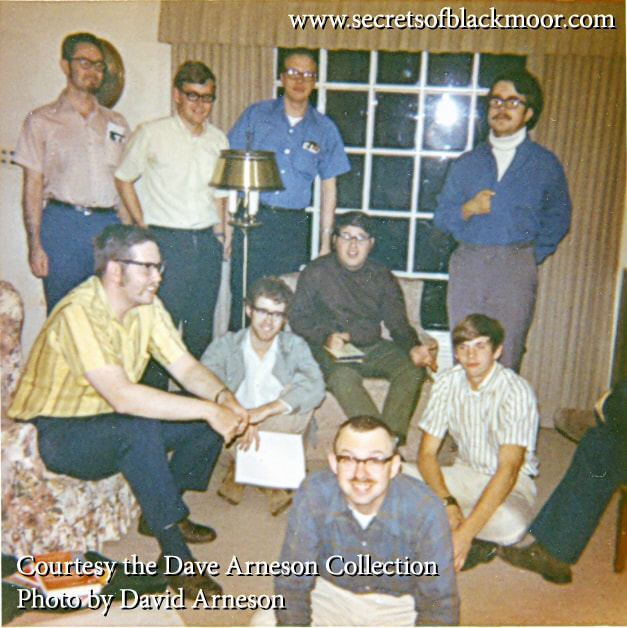
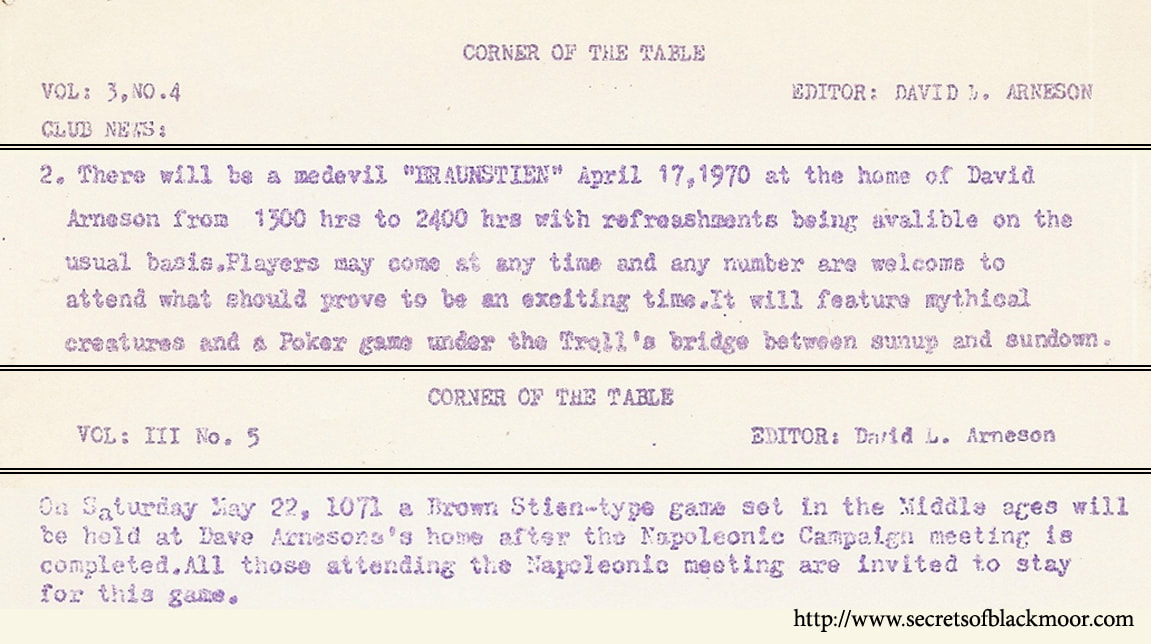

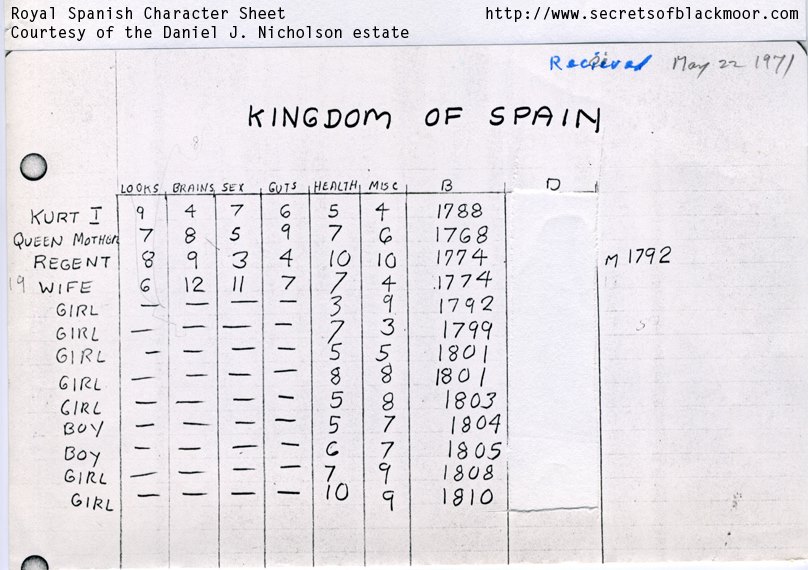
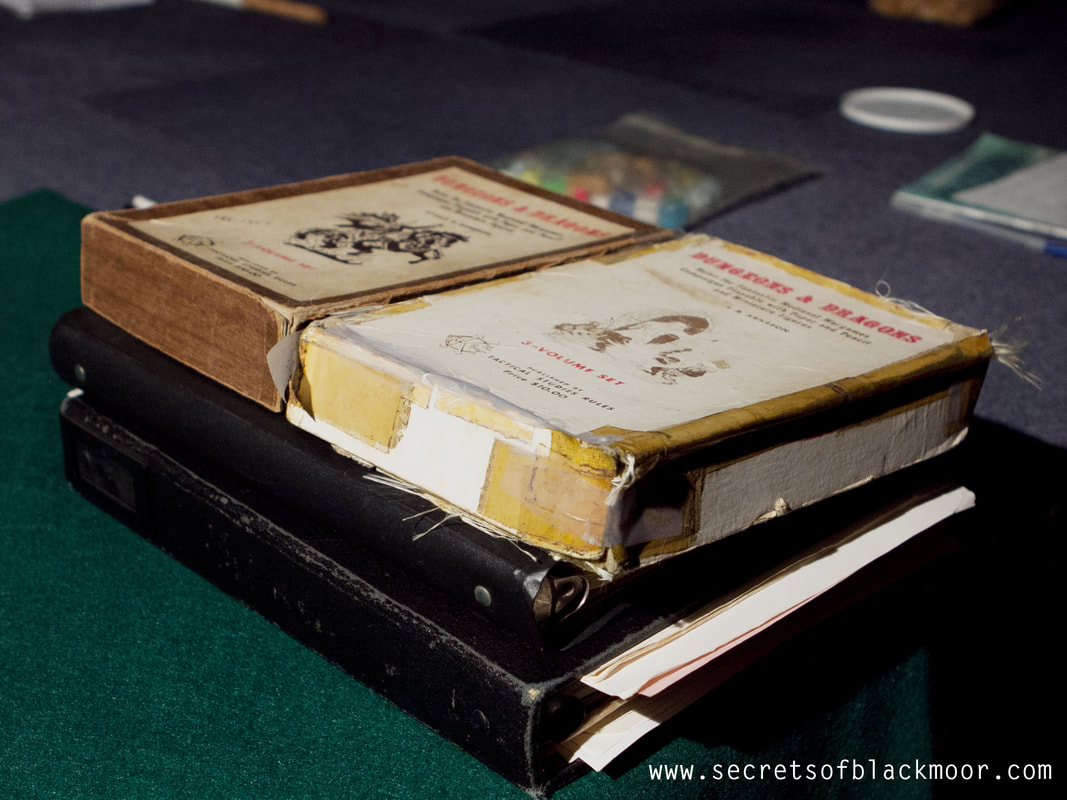
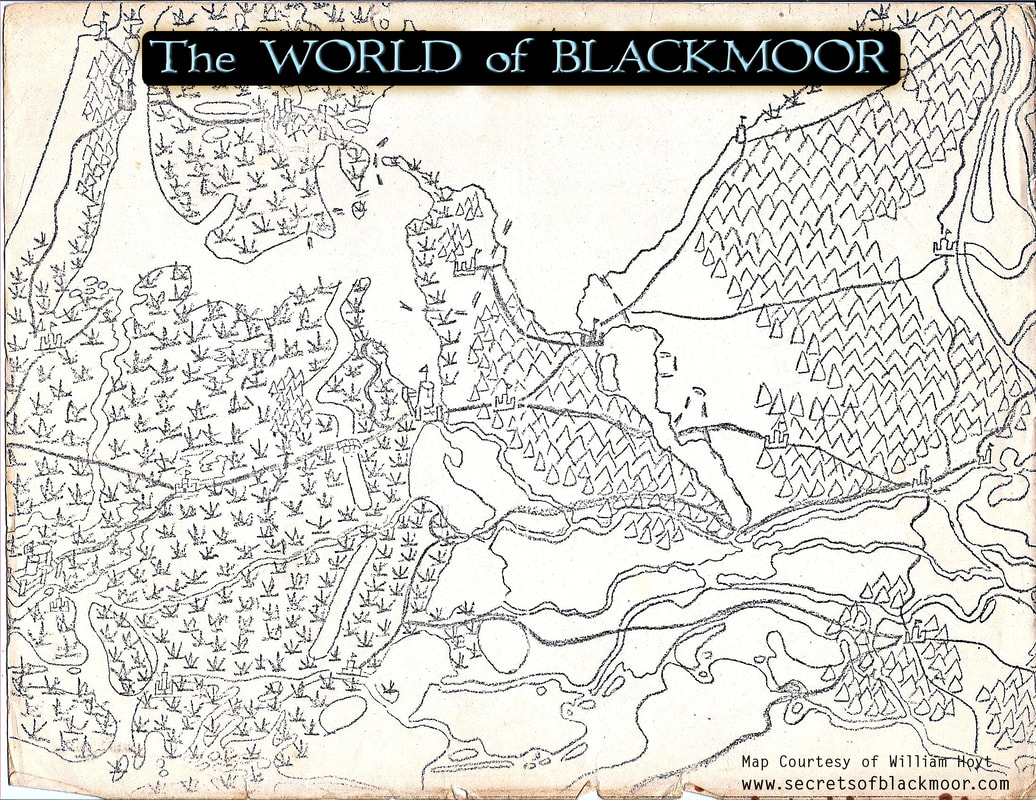
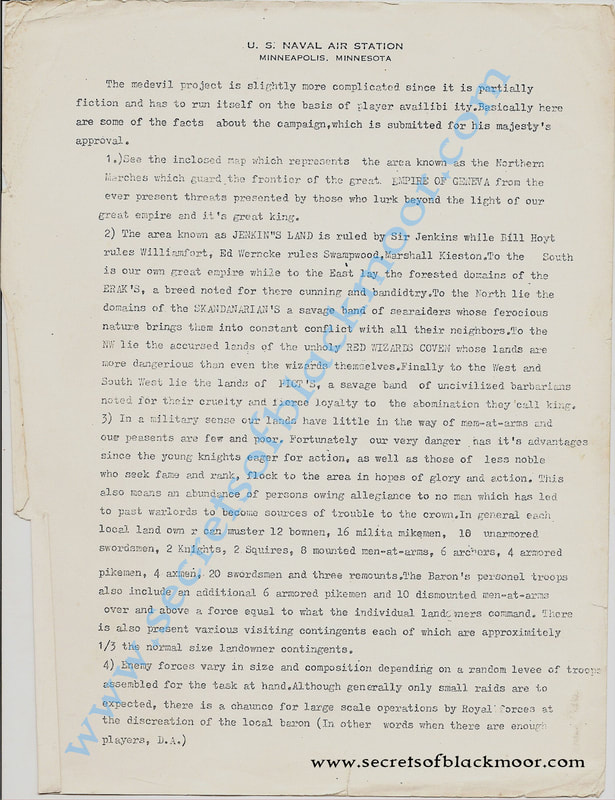
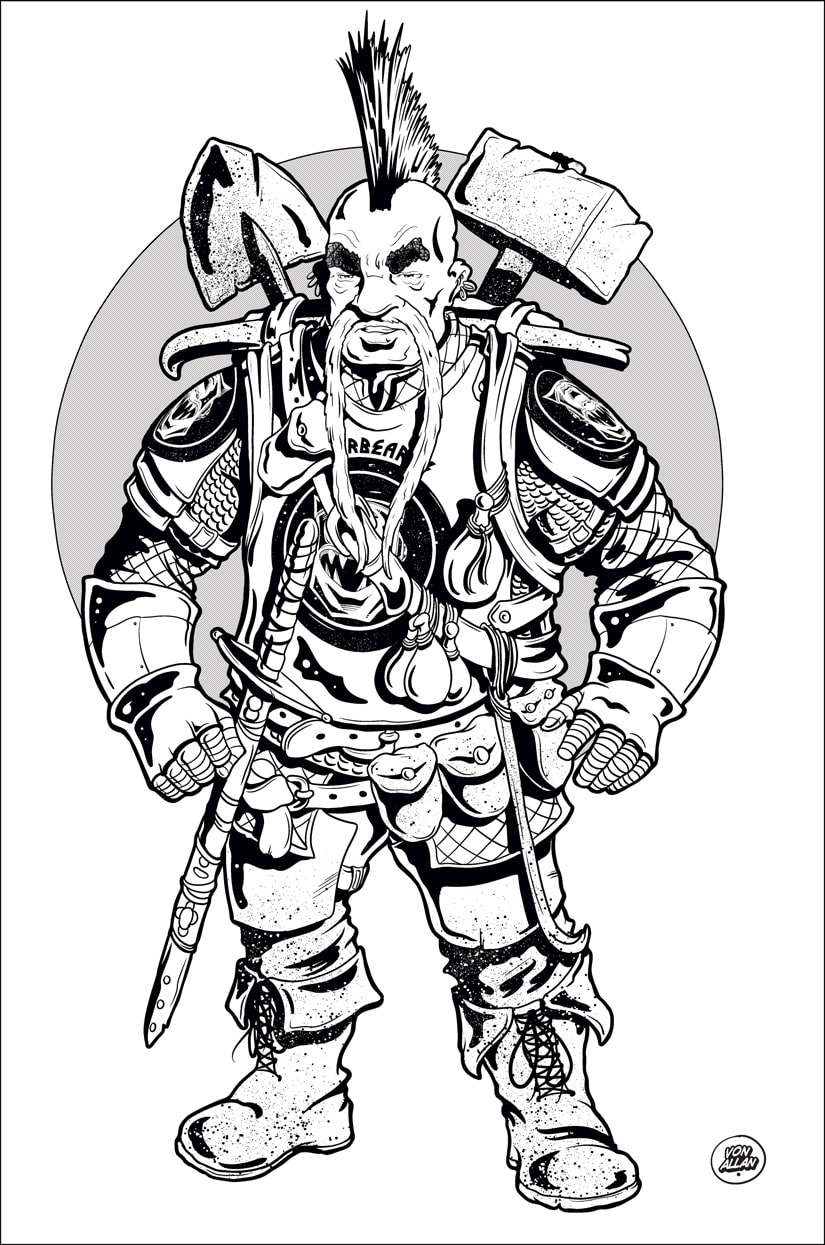
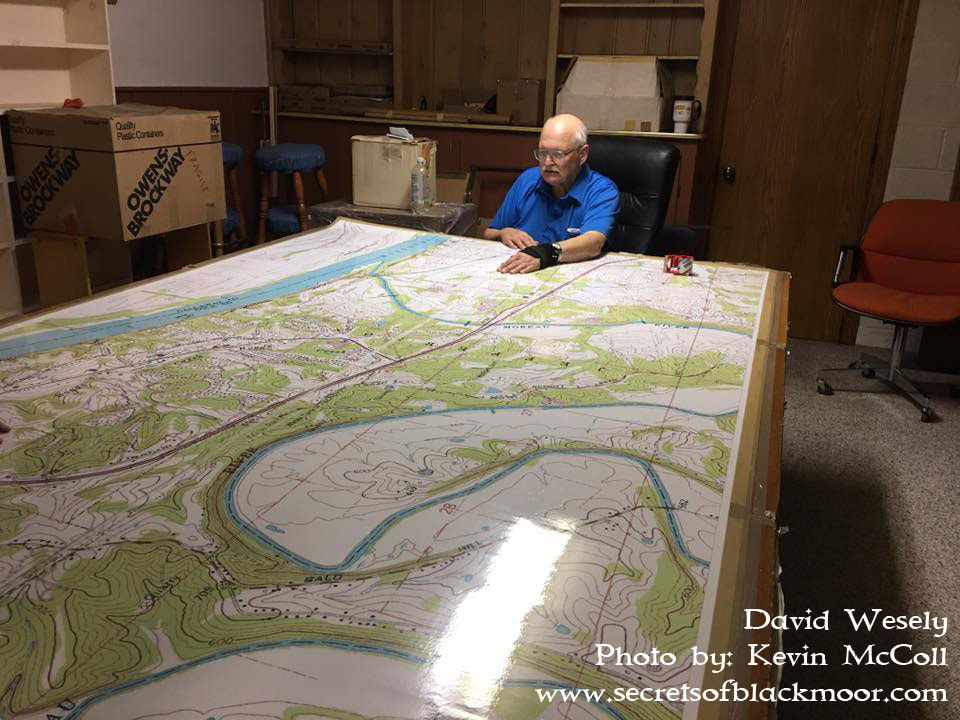
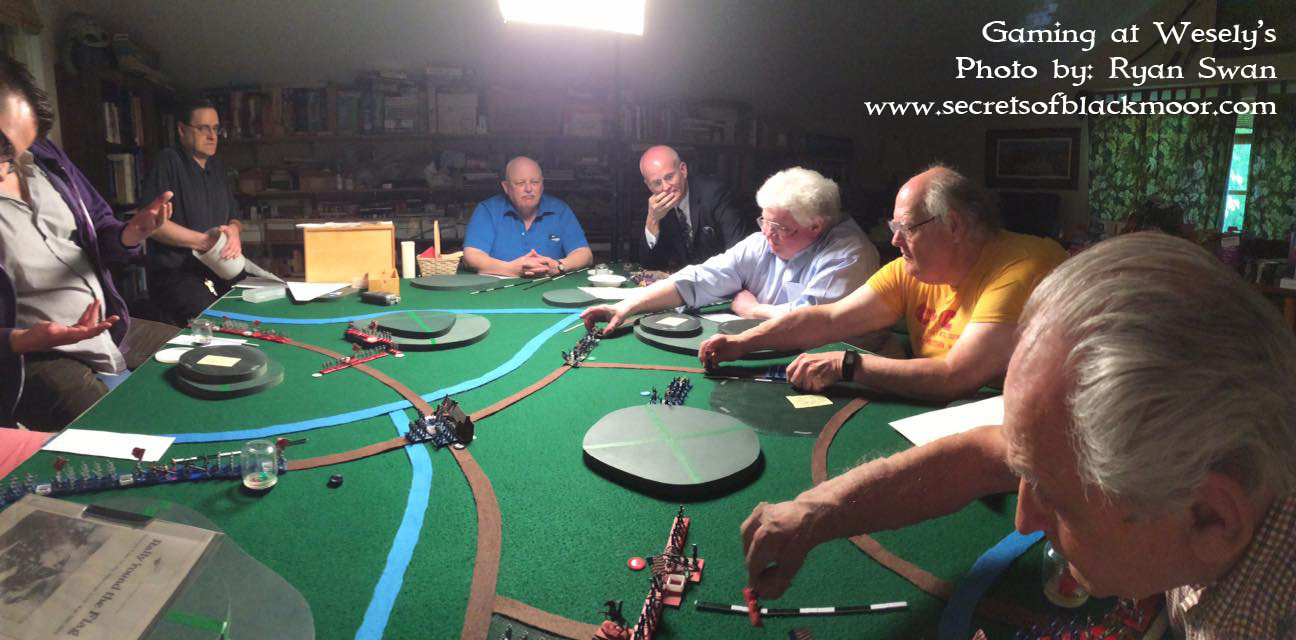



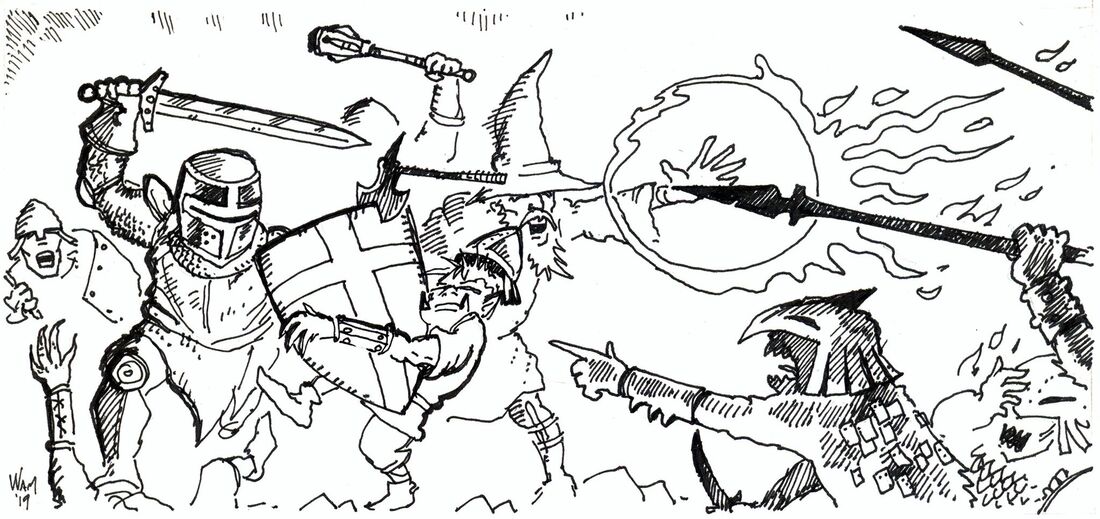
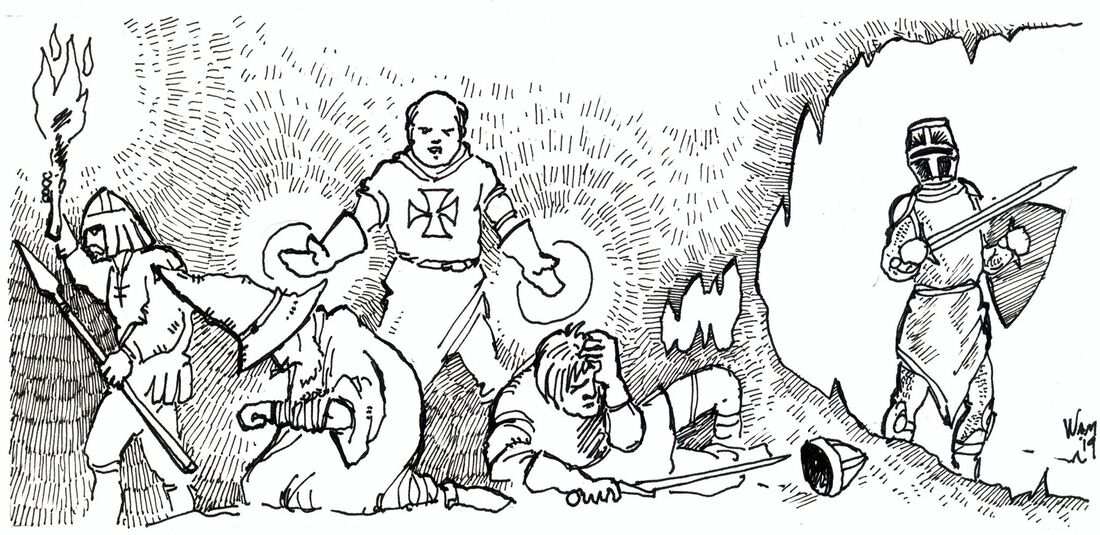
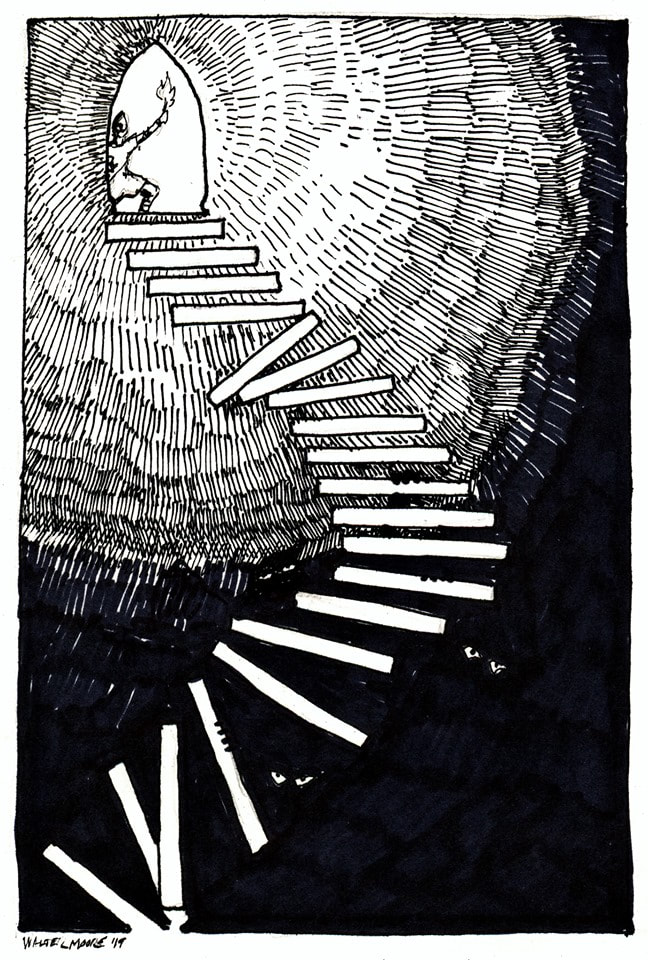
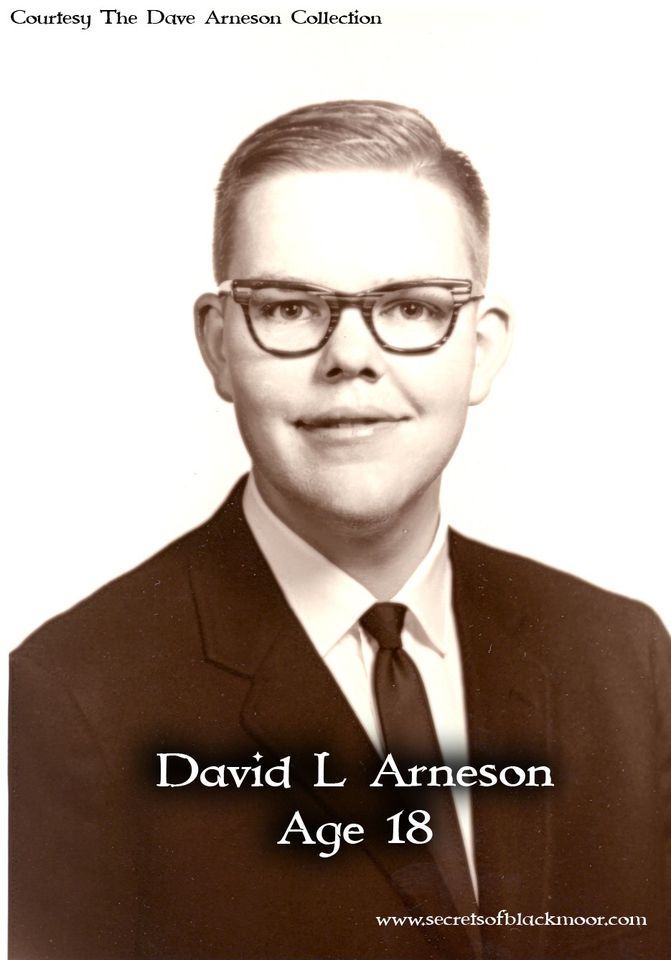
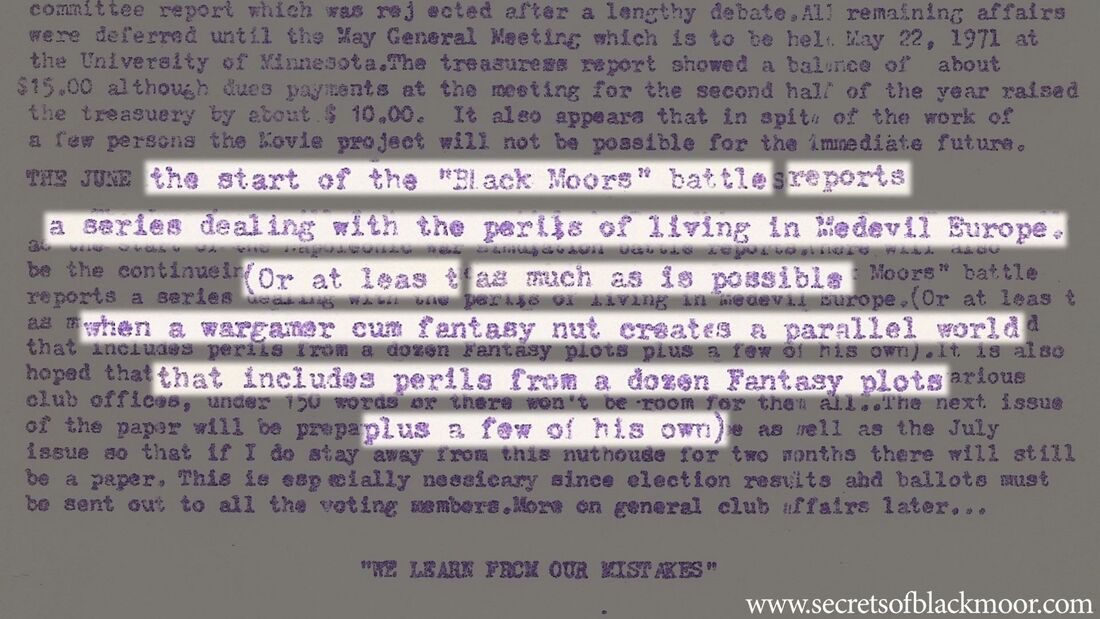
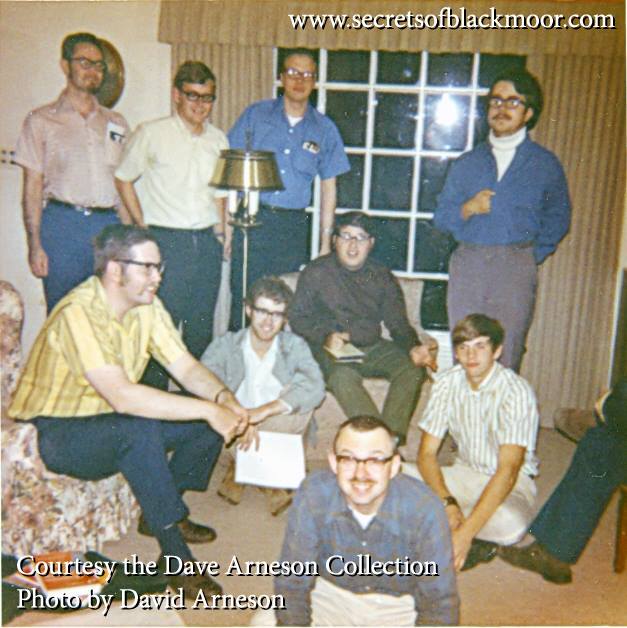
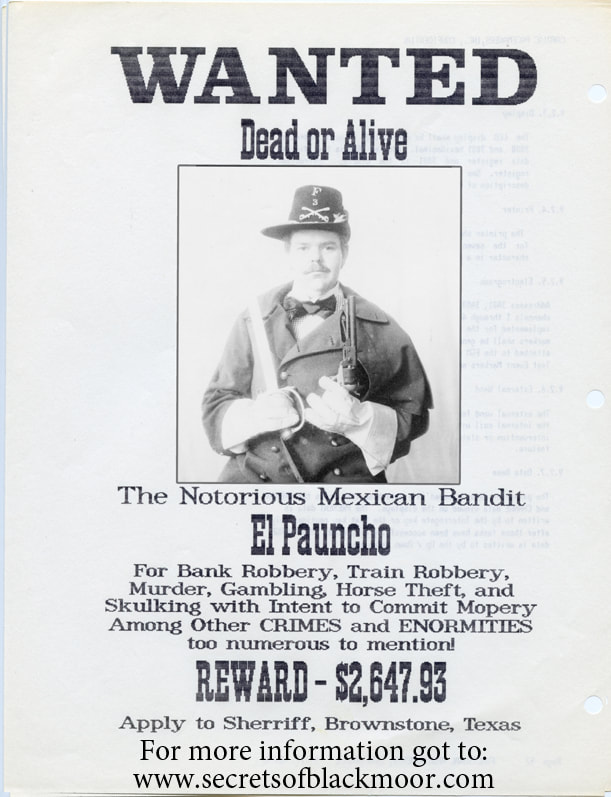
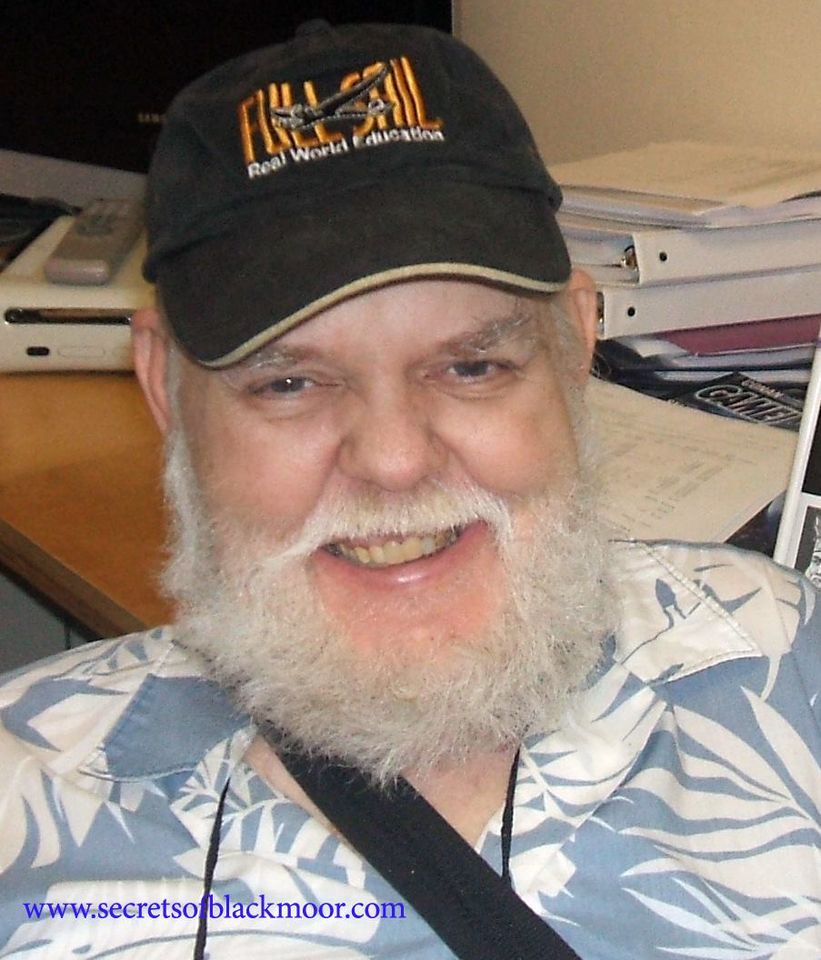
 RSS Feed
RSS Feed